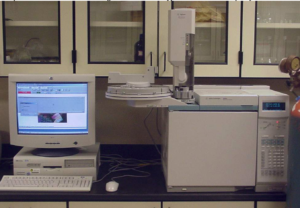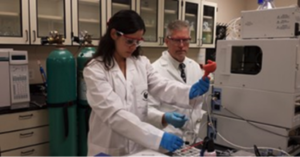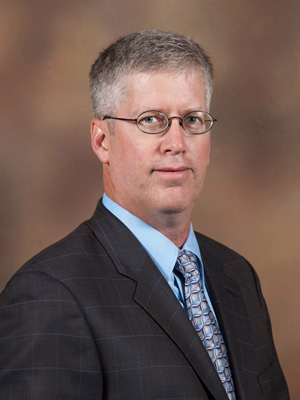Introduction
Background of How the Center Was Started
The Environmental Systems Engineering Institute (ESEI) was established in 1985 and is affiliated with the Department of Civil, Environmental, and Construction Engineering in UCF’s College of Engineering and Computer Science. The first director was Dr. James S. Taylor P.E., until in 2007 when Dr. Steven J. Duranceau, P.E. was named as the second director when Dr. Taylor retired. The Institute is evaluated on a 7-year basis by the State University System’s Board of Governors; the last Academic Program Review was completed in December 2019.
Purpose, Vision, Goals, and Mission
Purpose
The purpose of the institute is to provide environmental research with a focus on water quality. The institute is primarily concerned with undergraduate and graduate-level environmental research and education but also offers advanced environmental water quality analysis to non-university organizations in order to support operational expenses and provide a technical service to the Florida community.
Vision and Goals
The Environmental Engineering Program within the Department is geared to create a high-quality learning experience for our students. The principal goals include:
- Provide a broad engineering education to our graduates that will prepare them for both current and future professional challenges.
- Promote a commitment to continued scholarship and service among our graduates.
- Foster a spirit of innovation so that our graduates are positioned to take advantage of new technology in our profession.
- Promote an environment that is inclusive and diverse.
- To attain prominence in key areas of Environmental Engineering graduate education and research.
The research conducted directly or indirectly within the institute forwards UCF’s mission that seeks to produce pioneering scholarship and impactful research. The ESEI specializes in the study of drinking water with a focus on the use of the following technologies and techniques: membrane processes, aeration, disinfection, adsorption, coagulation and flocculation techniques, and corrosion control. The ESEI is unique as it is one of few laboratories in Florida that is dedicated to providing disinfection by-product formation potential modeling to municipal utilities and professional engineering organizations that cannot obtain the service from commercial laboratories or other academic institutions.
ESEI Mission
Our mission is to further the knowledge and practice of the environmental engineering profession nationally and internationally with a specific focus on water quality. We strive to provide our students with the best possible education in a stimulating research-oriented and intellectually diverse environment.
Technical Resource
The Institute has provided technical support and analysis to municipal/governmental water utilities, engineering firms and other. Some of the work conducted by ESEI has been funded by the United States Department of Agriculture. Many of our undergraduate students participate in research projects that without ESEI’s facilities and well as institutional experience would not have otherwise occurred. For example, one of the investigations conducted with the help of ESEI involved the participation of undergraduate civil, environmental and construction engineering students to impress upon them the significance of infrastructure corrosion, to provide an opportunity to learn more about corrosion, and to motive these students to pursue advanced degrees with the emphasis being placed on performing corrosion research. As such, that research effort supported, in part, the recommendations offered by the National Research Council and National Academy of Sciences that sought actions to improve the corrosion education of graduating engineers (Assessment of Corrosion Education, The National Academies Press, Washington D.C. 2009).
Unique Services
The ESEI is unique as it is one of few laboratories in Florida that is dedicated to providing disinfection by-product formation potential modeling to municipal utilities and professional engineering organizations that cannot obtain the service from commercial laboratories or other academic institutions. Another unique expertise that the ESEI has developed is the ability to accurately quantify sulfide in ground and brackish well supplies. Sulfide is a non-regulated, naturally occurring chemical that occurs in well water in Florida and is very difficult to accurately measure. ESEI has earned a reputation for this type of testing which has aided UCF to attract both Institute and UCF research projects that support graduate student education. The research that is conducted directly, or indirectly, within the Institute aids the overall mission of UCF in its desire to conduct high quality research that results in high-impact peer reviewed publications. The ESEI also conducts membrane flat-sheet testing and rapid small-scale column testing for both activated carbon and ion exchange applications.
Institute Resources
The CECE’s ESEI is situated in several laboratories within the College of Engineering. Its’ facilities occupy a total area of approximately 5200 square feet. These laboratories are equipped with state-of-the-art analytical instrumentation as well as bench-scale membrane filtration systems, Sterlitech flat-sheet cell testing units, and other hardware. The lab generates its own distilled, deionized water using a Corning Model LD5A distillation/deionization unit that can be equipped with two stages of cartridge filtration when required. The analytical equipment currently maintained at CECE’s ESEI include:
- Agilent 6890 Gas Chromatograph with Micro-ECD Detector, G2613A Autosampler, and Chemstation Plus Software
- Perkin Elmer Clarus 580 Gas Chromatograph with ECD Detector, Autosampler, and TotalChrom Version 6.3.2 Software
- Shimadzu GC-17A Ver. 3 Gas Chromatograph with FID Detector and a CR8A Chromatopac Processor
- Teledyne Tekmar Fusion TOC Analyzer with Teklink 1.1.5.1 Software
- Perkin Elmer Optima 2100 DV ICP-OES System with AS-93 Plus Autosampler and WinLab 32 Software
- Anton Paar EKA Electrokinetic Analyzer with VisioLab Software
- Dionex ICS-1100 Ion Chromatograph with Electrochemical Detector/DS6 Heated Conductivity Cell, AS40 Autosampler, and Chromeleon 7.1 Software
- Perkin Elmer Series 200 HPLC System with D-Star Instruments DVW-10 Variable Wavelength Detector using Totalchrom 6.2.1 Software
- Ramehart Inc. Model 100-00 F4 Series Contact Angle Goniometer with DROPimage Standard V2.4 Software
- HIAC/Royco Model 8000A 8-Channel Particle Counter
- Osmonics CF042 Membrane Element Cell and SEPA CF II Membrane Element Cell
- Phipps & Bird PB 900 Jar TesterM
- Hach DR 2700 Spectrophotometer
- Mettler Toledo ML104 Analytic Balance
- Mettler Toledo MT5 Analytical Balance
- Thermo Scientific Linberg/Blue Box Furnace
- Heratherm OMS 100 Oven
- Hach 2100Q Turbidimeter
- Thermo Scientific Refrigerator/Freezer

Gas Chromatograph with ECD Detector

Chromatograph with ECD Detector

Analyzer (Teledyne Tekmar, Mason OH)

Quality Assurance Project Plan (Overview)
A quality assurance project plan (QAPP) is required for the laboratory that delineates the planning, implementation, and assessment procedures for a particular project, as well as any specific quality assurance and quality control activities. It integrates the technical and quality aspects of the project to provide a “blueprint” for obtaining the type and quality of environmental data and information needed for a specific decision or use. Sample collection and water quality analyses will be performed in strict accordance with Standard Methods for the Examination of Water and Wastewater and the Environmental Protection Agency’s Methods for Chemical Analysis of Water and Wastes and Methods and Guidance for the Analysis of Water. Approved protocols will be used for the sample collection and evaluation program, and includes the use of parameter specific holding times, container types, sample volumes, and preservative requirements.

